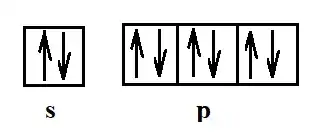What exactly does one mean by "energy state"?
It is state at which system has definite value of energy.
To bring the idea closer to home consider some planet (with mass $m$) revolving around very heavy star (with mass $M\gg m$) due to gravitational attraction of the star. For simplicity, assume the planet can move only in circular motion, thus its velocity is given uniquely by its distance $R$ from the star by requirement of gravitational force being centripetal one:
$$G\frac{Mm}{R^2}=m\frac{v^2}{R}.$$
The state of the system is then specified uniquely once the distance from the star is specified and the energy of the system is given as a sum of kinetic and potential energy of the planet:
$$E=m\frac{v^2}{2}-G\frac{Mm}{R}=-G\frac{Mm}{2R}$$
So the energy state with energy "E" is the state of the system at which planet is at the distance $R$ given by the above formula.
In atoms, the idea remains but there are complications. One of them is that parameter analogical to $R$ is not continuous but discrete. So electrons can jump only between certain allowed values - orbitals. Another is pauli exclusion principle which states, that two electrons cannot occupy the same state. And yet another is the fact that there are several states with the same energy. So energy state with energy $E$ can correspond to more than one actual state (this already happens for the planetary motion as planet can move on an ellipse instead of circle and have the same energy).
Edit:
I forgot one more important complication due to quantum mechanics. Because of wavy nature of QM systems, the system does not need to be in any definite energy state, but can be in a state that can be seen as composed of more different energy states. This does not happen in classical physics, as one can always compute definite value of energy. In QM this is not so.
You perhaps heard that in QM electrons don't have definite position in space, but rather they have only some probability of finding them in certain position. Sometimes, the electron can have 100% probability of being found at on single position and then we say the electron is in the "position state" with that position. If the probability is not 100% then it is not in position state.
The case with energy states is analogical.
